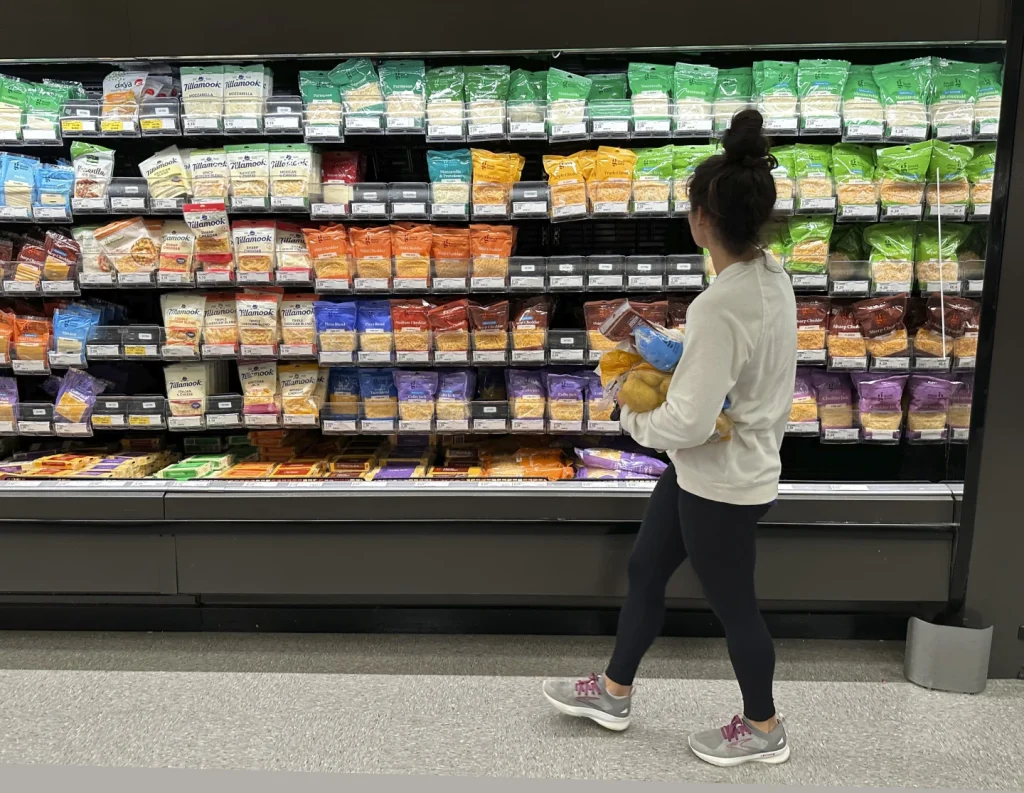The recent shift in consumer behavior has had a profound impact on the economy, with the once soaring inflation rates now on a downward trend.
American consumers have become more price-sensitive, choosing to seek out cheaper alternatives and bargain deals, or simply avoiding purchasing items they consider too expensive.
This change in consumer mindset has not only helped to curb inflation but has also put pressure on companies to reevaluate their pricing strategies.
Major corporations like Amazon, Disney, and Yum Brands have all noted a shift in consumer behavior, with more customers opting for lower-priced options.
This trend has forced companies to rethink their pricing models, with many choosing to either slow down price increases or even slash prices in order to remain competitive.
The result has been a noticeable cooling of inflation pressures, much to the relief of consumers who were struggling to make ends meet amidst rising prices.
Tom Barkin, president of the Federal Reserve Bank of Richmond, emphasized the importance of consumers pushing back against high prices.
He noted that while prices are still high, consumers have reached a point where they are no longer willing to accept them.
This shift in consumer sentiment has been a driving force behind the recent decline in inflation rates, bringing them closer to the Federal Reserve’s target of 2%.
As consumers become more conscious of their spending habits and seek out more affordable options, their expectations for future spending and inflation have also decreased.
According to a survey by the Federal Reserve Bank of New York, consumers expect their spending to grow by 4.9% in the next year, the lowest reading since April 2021 when inflation was on the rise.
This newfound frugality among consumers has not only helped to rein in inflation but has also had a ripple effect on the economy as a whole.
Overall, the shift in consumer behavior towards more price-sensitive choices has been instrumental in taming the inflation beast that had been plaguing the economy for the past few years.
With consumers leading the charge against high prices, companies have been forced to adapt, ultimately leading to a more stable economic outlook for the future.
The latest survey findings indicate that consumers are expecting inflation to remain low at just 2.3% over the next three years, the lowest figure recorded since 2013.
This expectation of low inflation can have a self-fulfilling effect, as households may delay purchases in anticipation of stable or declining prices in the near future. This behavior can help keep price pressures in check.
Various factors have contributed to the current low inflation environment, including the improved functioning of supply chains, which has increased the availability of essential goods like vehicles, meats, and furniture.
Additionally, the Federal Reserve’s implementation of high interest rates has slowed down purchases of big-ticket items such as homes, cars, and appliances.
However, there is concern about whether consumers will pull back on spending to a degree that could harm the economy.
Consumer spending plays a significant role in driving economic activity, and a decrease in spending could potentially lead to an economic downturn.
The recent cooling of the job market has raised worries about a possible decline in consumer spending, which caused a temporary drop in stock prices.
This week, the focus will be on upcoming reports on inflation and retail sales. The consumer price index for July is expected to show a modest increase of 3.2% from a year earlier, excluding food and energy costs.
This would mark a slight decrease from the previous month and the lowest year-over-year inflation rate since April 2021.
Additionally, retail sales for the previous month are anticipated to have risen by 0.3%, indicating that consumers are still willing to spend despite being more cautious with their finances.
Many businesses have observed changes in consumer behavior as a result of the current economic climate. Andrew Jassy, CEO of Amazon, noted that customers are opting for lower-priced items, leading to a decrease in average selling prices.
Similarly, David Gibbs, CEO of Yum Brands, mentioned that a more budget-conscious consumer base has affected sales at their fast-food chains, with a 1% decline in sales in the last quarter. These trends reflect the shifting dynamics of consumer spending in response to economic conditions.
Over the past year, there has been a noticeable shift in focus for many companies towards providing consumers with more affordable options.
Gibbs, a spokesperson for one such company, emphasized the importance of offering affordable choices to customers. This sentiment is echoed by other businesses, with some opting to slash prices outright.
Dormify, an online retailer specializing in dorm supplies, has reduced the price of their comforters from $99 to $69 in response to changing consumer behavior.
The Federal Reserve’s “Beige Book” provides further insight into the nationwide trend of retailers discounting items and consumers becoming more price-sensitive.
This shift in consumer behavior has been observed in almost all 12 Fed districts, indicating a widespread impact on the economy.

Despite these changes, most economists believe that consumers are still spending enough to support economic growth. However, there has been a shift in consumer preferences, with individuals becoming more selective in their purchases.
Jared Bernstein, from the Biden administration’s Council of Economic Advisers, highlighted consumer caution as a contributing factor to the current state of inflation.
Following the pandemic, consumers found themselves in a more stable financial position due to stimulus checks and reduced spending on services.
This newfound financial stability led to an increase in pricing power for businesses, resulting in some companies raising prices beyond what was necessary to cover costs.
Isabella Weber, an economist at the University of Massachusetts, coined the term “sellers’ inflation” to describe the current pricing phenomenon.
Supply chain disruptions have provided businesses with justification for price hikes, which consumers are increasingly unwilling to accept. This shift in consumer behavior is expected to continue to impact pricing strategies and ultimately slow down inflation.
Overall, there is cautious optimism among economists like Barkin regarding the future trajectory of inflation. The recent changes in consumer behavior, coupled with external factors such as labor and supply chain shortages, are expected to influence pricing decisions in the coming months.
As consumers become more discerning in their purchases, businesses will need to adapt by offering competitive prices and value to maintain consumer loyalty.
